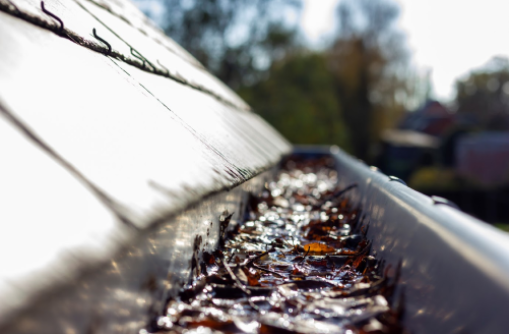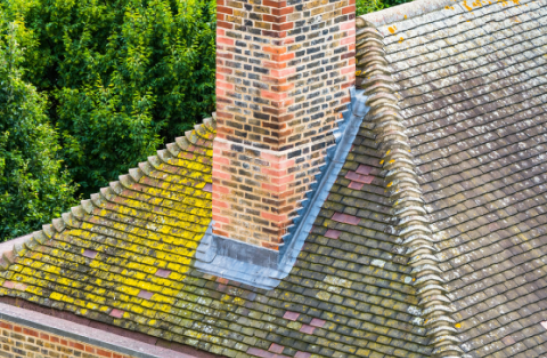Whether you are experienced or new to roofing, we have created a comprehensive list of roofing-related terminology. We aim to provide insights and better understand the industry through our firsthand experience. This article is divided into two parts, covering essential aspects of roofing that we hope will help you make more informed decisions, drawing on our extensive industry expertise.
Aluminium Flashing: A common aspect of UK roofing, the primary role of aluminium flashing is to direct water away from vulnerable areas such as joints (where a chimney joins a roof). A core benefit of using aluminium is that it does not rust, is strong, takes years to degrade, and is versatile. Due to the wet weather and UK climate, it is a popular choice for roof-related projects.
Batten Gauge: This is an important roofing element used during installation. It ensures that tiles (or other related materials) are properly spaced and aligned at the correct angle. It is important that your roofer understands how to use a batten gauge correctly, as incorrect installation can reduce the effectiveness of your roof, lessen its lifespan and make it look aesthetically incorrect.
Chimney Repointing: Chimney reporting is an area that Knights Roofing have extensive experience in. The main aspect of chimney repointing is to restore the integrity of the mortar which helps keep the structure secure and water resistant. Signs that chimney repointing is required are usually visual, such as missing mortar, cracks or debris on the floor. Failure to act quickly can become even more costly in the future.
Downpipe: A highly effective way of water management and directing it away from a building. In the UK, there are regulations regarding downpipes. These include material standards, sizing, discharging and installation requirements. Typically, downpipes are made from uPVC, however, depending upon preferences and building types, other materials include aluminum, cast iron and steel.
Eco-Friendly Roofing: A trend that is becoming increasingly popular due to the uptake in sustainable living. Roofing can improve energy efficiency through enhanced installation, reducing energy needs and carbon footprint. In addition, eco-friendly materials such as recycled and biodegradable products can be used. There are also government incentives, such as the Renewable Heat Incentive (RHI), that offer financial incentives.
Flat Roofing: Flat Roofing is a common option for both residential and commercial buildings and a cost-effective solution. It is popular for garages and extensions, allowing space maximisation and, quite often, a quicker build time. Flat roof installation must be planned properly to ensure adequate water runoff and drainage. Regular roof inspections are recommended for flat roofs due to the risk of water pooling and lack of roof visibility.
Gutters: Used to collect rainwater and direct it away to structures such as downpipes or water storage tanks. They are often made from uPVC due to lower costs and ease of use. A key element of gutter installation is to ensure strong and regular connections as well as make sure to create a decent gradient. Regular maintenance is vital as gutters can often get blocked by tree debris or wear over time.
Hip Roof: An elegant and less often utilised architectural style, hip roofs are when all four sides are sloping down from the top. The gradient can vary significantly between buildings, often credited with providing good durability due to their self-bracing design. Hip roofs can usually be more expensive due to their shape, requiring more materials and additional guttering, and a professional roofer is needed to ensure proper installation.
Insulation: Insulation has become more popular recently due to its eco credentials and the cost savings it can provide through lower energy bills. Fibreglass and foam are the most common types of insulation used in the UK. Insulation can help keep a property warm in the winter and also cooler in the summer. Another associated benefit is noise reduction, as the insulation can help keep out external noises. It is essential that your roofer evenly distributes the insulation and covers potential problem areas.
Jute Felt: Jute Felt is a durable roofing material, also known as torch-on felt (due to heating the felt through a torch-on method). A professional roofer can install jute felt fairly quickly and cover large areas. Often used to help waterproof, when appropriately installed, it can be highly effective and highly resistant to water and sun UV. Regular inspections are required for Jute felt, as it can become susceptible to vegetation build-up. Some common areas to consider are felt thickness and guarantees provided.
Lead Roofing: Another speciality of Knights Roofing is lead roofing, which is popular due to its versatility and longevity. It is often used for flashing and heritage buildings. Lead roofs require expert installation and regular inspections, especially after severe weather. Due to its quaint appearance, lead is a favourite material for many.
Mortar: Mortar is a vital component of roofing. It helps secure or fix tiles, fills gaps, and provides structural support. One of the main benefits of mortar is that it is a cost-effective solution that can be used on various roofing styles. It is also durable and relatively easy to use.
Natural Slate: An expensive roofing material with a luxurious look and feel. One of the main benefits is that it does not succumb to warping, rust, or the need for regular maintenance. Natural slate also requires an expert roofer to install it, as the installation has to be perfect to ensure no leaks or tile movement. It is also heavy and requires ample support to ensure no structural issues.
We hope the above terminology has helped enhance your knowledge of roofing terminology. We will soon create part two to finish off this subject.




